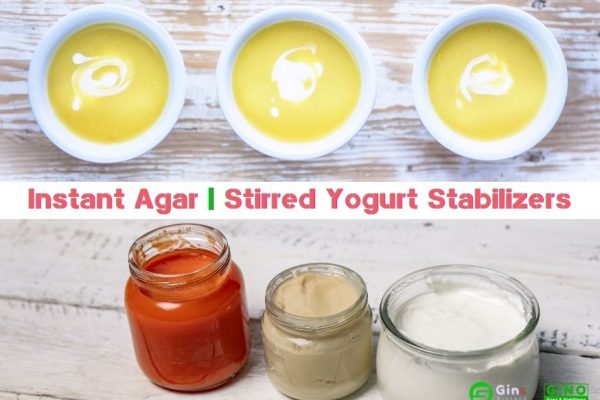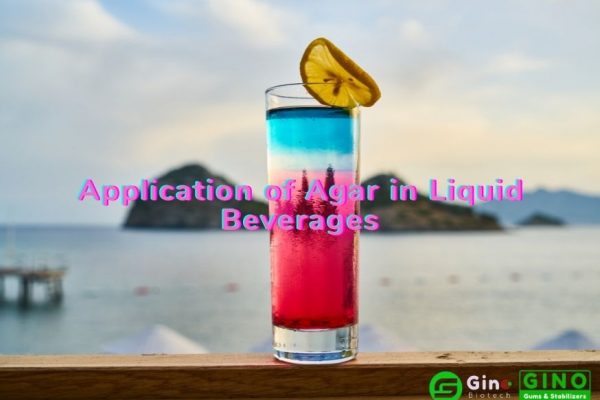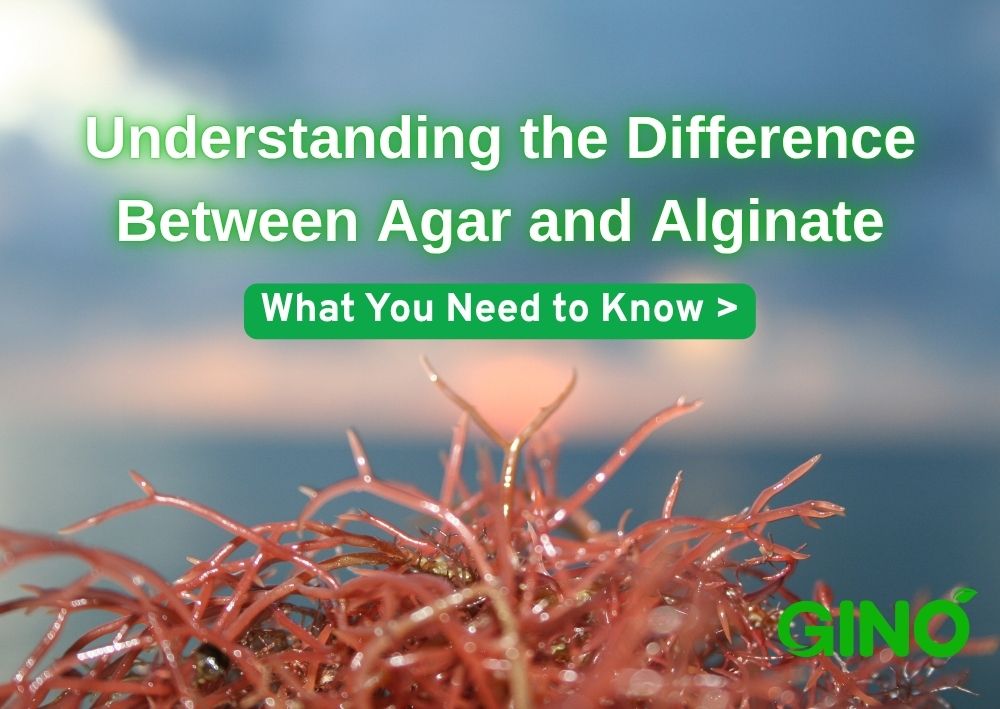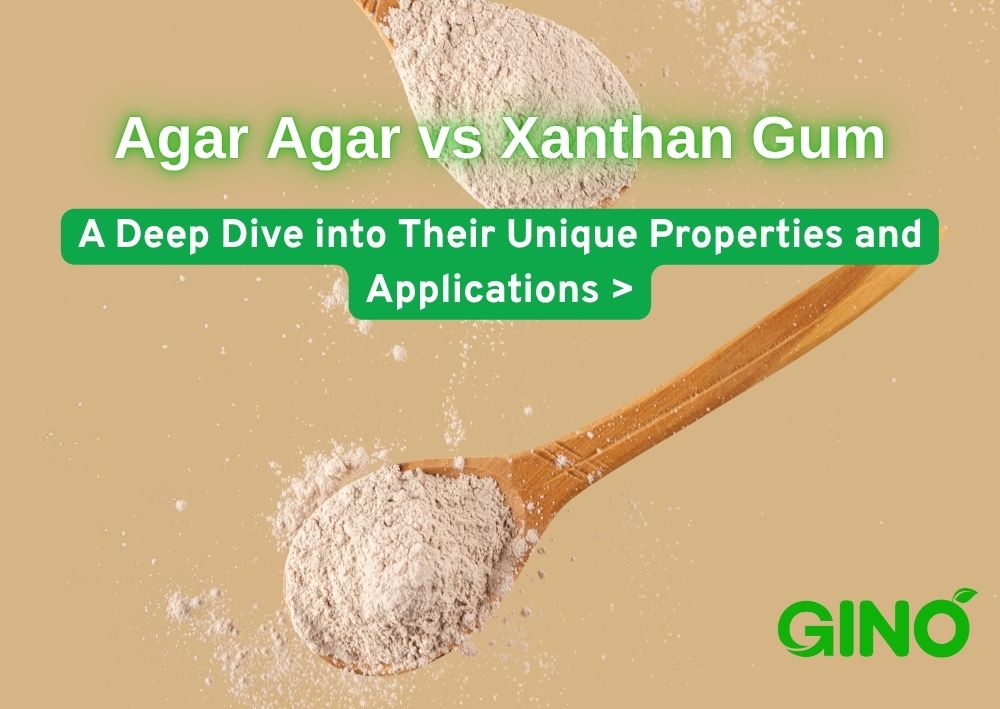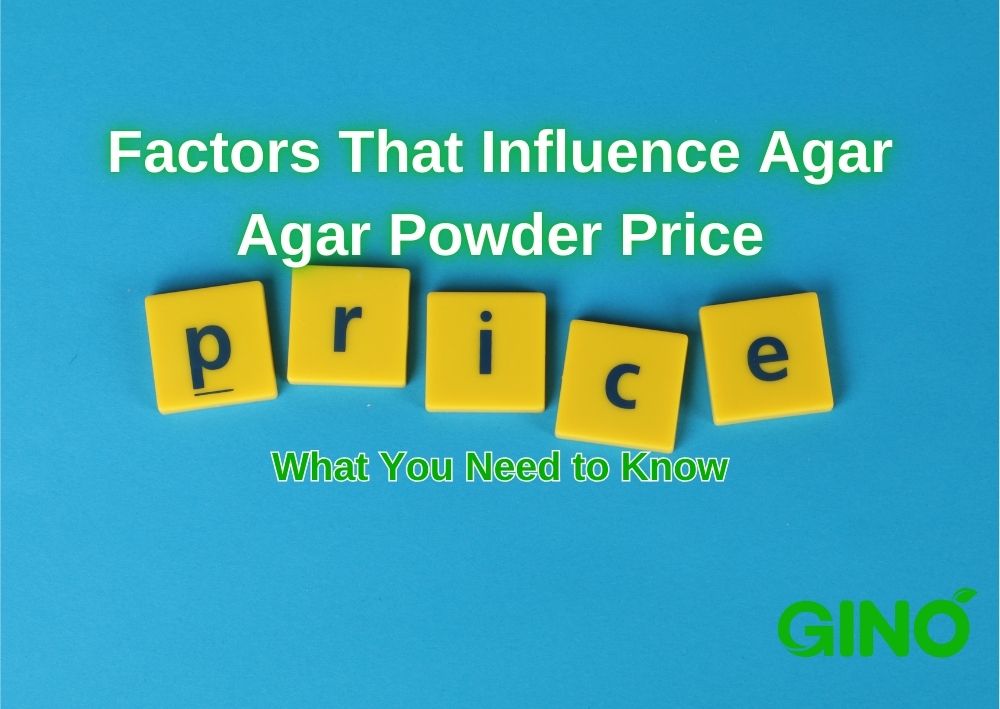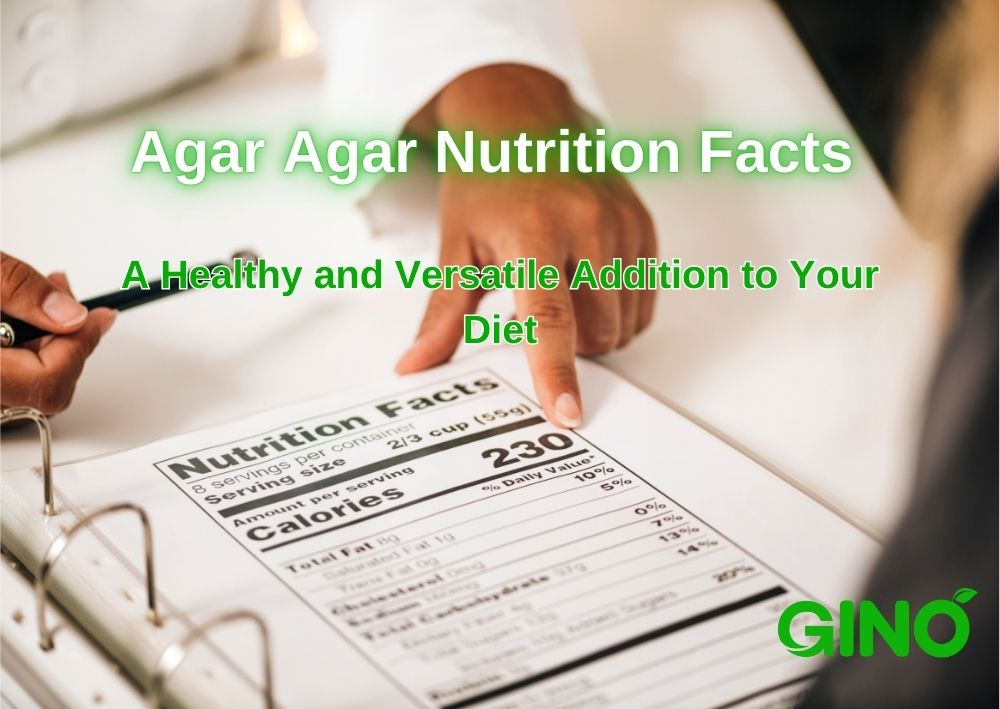For over 10 years, Gino Biotech has been a major supplier of food hydrocolloids. With our variety of plant-based gums & stabilizers, we can create tailor-made hydrocolloid solutions perfectly matched to the needs of our customers. READ MORE
How to Make Agar Agar Powder-The 3 Common Extraction Methods
How to Make Agar Agar Powder
Facebook
Twitter
LinkedIn
Agar was originally introduced in China, where gelidium is said to have been used for cooking and making gel for consumption more than 1000 years ago. It was later spread to Japan, where a Japanese man discovered by chance the method of making agar by freezing it naturally in about 1658, which is how the Japanese came to call it "Kan Ten".
After the end of World War II, the demand for agar was increasing and there was a shortage of gelidium, so people started to actively research the production of agar from Gracilaria.
The word "agar" comes from agar-agar, the Malay name for red algae (Gigartina, Gracilaria) from which the jelly is produced. It is also known as Kanten (Japanese: 寒天) (from the phrase kan-zarashi tokoroten (寒曬心太) or “cold-exposed agar”), Japanese isinglass, China grass, Ceylon moss or Jaffna moss. Gracilaria lichenoides is specifically referred to as agal-agal or Ceylon agar.
Etymology Click to Know More
In the 1960s, Japan successfully solved the technical method of making agar with Gracilaria, and in the 1970s, Gracilaria was used in large quantities in the world to make agar, and Gracilaria has replaced gelidium as the most used raw material for agar.
The development of agar extraction process has been gradually improving, and there are three commonly used methods, namely High Temperature and High Pressure Method, Alkali Method and Enzyme Method.
So, what are the advantages and disadvantages of each of them?
How to Make Agar Agar Powder
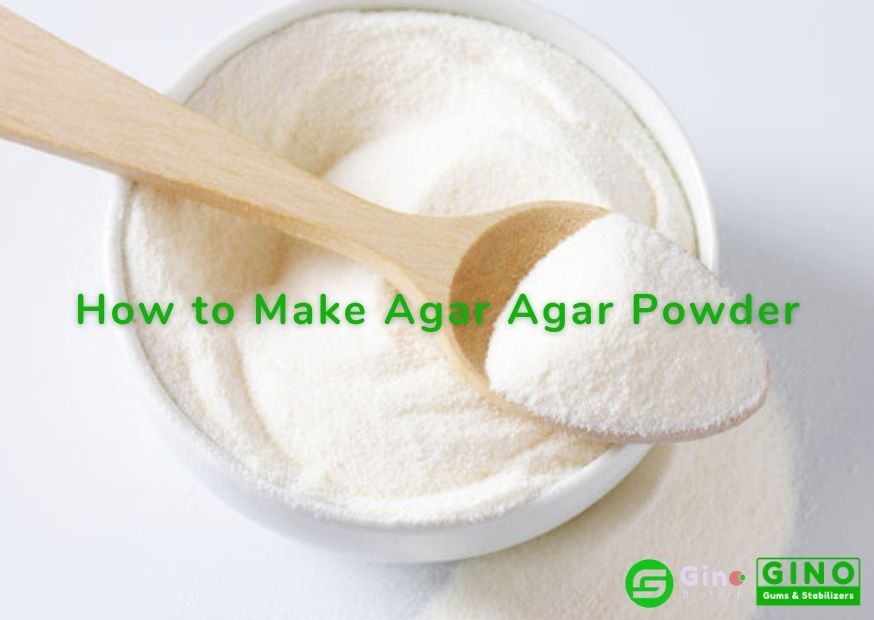
The 3 Commonly Used Extraction Methods
1. High Temperature and Pressure Method
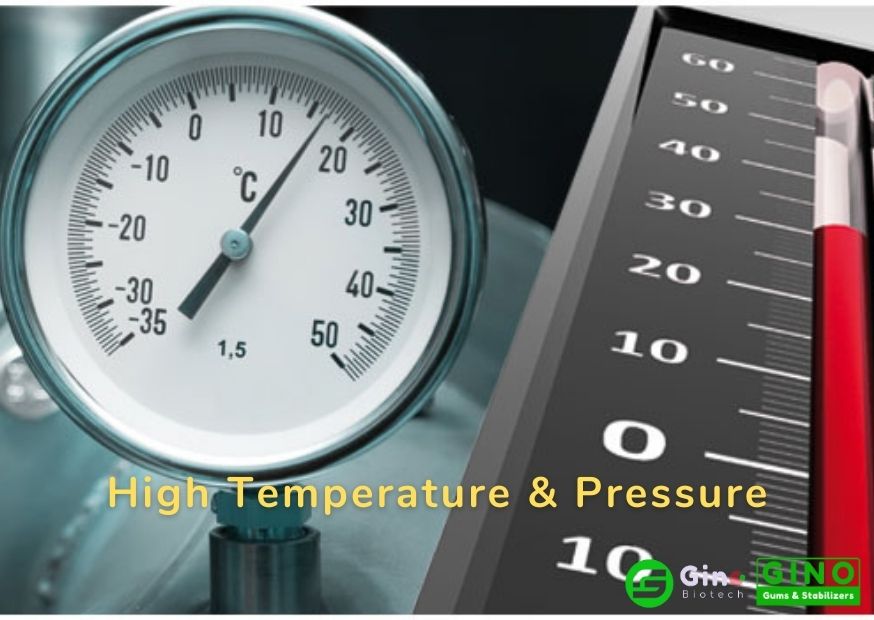
The traditional agar extraction method is the high temperature and high pressure method.
The extraction process is as follows.
Raw material treatment → soaking → boiling → filtering → cooling → dehydration → drying → crushing → packaging.
This extraction process is simple because there is no acid and alkali treatment, the agar molecules are less damaged and the extraction rate is higher, but also because there is no alkali treatment to remove sulfate, resulting in lower strength of agar gel.
Generally, this method is suitable for raw materials with low sulfate base content, such as gelidium.
2. Alkali Method Extraction Process
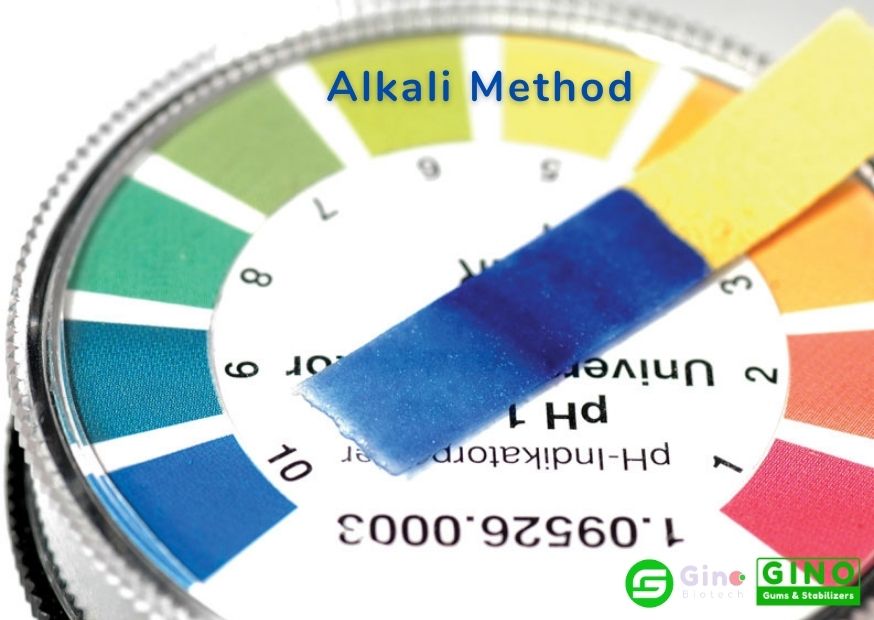
There are 3 common alkali processes: Low-temperature high alkali, Medium-temperature high alkali and High-temperature dilute alkali.
The role of alkali treatment in agar extraction process is to remove sulfate group and pigment to improve the quality of agar.
The process of agar extraction by alkali process is as follows.
Raw material treatment → alkali treatment → washing → acid treatment → washing → bleaching → washing → boiling gel → filtering → cooling → dehydration → drying → crushing → packaging.
Process disadvantages
What are the disadvantages of the Alkali Method?
- Using medium and low temperature high alkali method to extract agar, because the temperature is moderate, the production process is easier to control. At the same time, due to the large amount of alkali, the water consumed for cleaning is very large, the burden on the environment is large, the production cycle is also very long, the production costs are higher.
- Using high temperature dilute alkali method to extract agar, the alkali concentration is lower, causing less pollution to the environment and short production cycle. However, the production process is not easy to control because of the high extraction temperature, and the alkali tends to destroy the agar under high temperature conditions, resulting in gum loss and reducing the yield.
How to Make Agar Agar Powder in Effective Ways?
To better utilize the alkali process to extract agar, scholars have been continuously exploring its process conditions.
Regarding the extraction of agar by medium and low temperature high alkali, Qi Bo et al. studied the relationship between alkali treatment temperature, treatment concentration and time on the gel strength of Gracilaria lemaneiformis agar to provide theoretical basis for the industrialization of Gracilaria lemaneiformis agar extraction by cold alkali method. There are more studies on the extraction of agar by high temperature dilute alkali method.
Mu Kaifeng et al. used high temperature dilute alkali method to extract Porphyra haitanensis agar, and the process conditions with higher extraction rate and better quality were obtained by using agar yield and gel strength as the indexes. Under high temperature conditions, the extraction of agar by alkali method tends to cause gel loss.
Arvizu et al. investigated the effect of alkali treatment time on the extraction of Gracilaria agar, and the results showed that the agar extraction rate and gel strength decreased with the increase of alkali treatment time, and both reached the maximum value when the alkali treatment time was 0.5h.
Li Laihao et al. studied the process conditions of Gracilaria agar extraction by high-temperature dilute alkali method, and showed that the addition of appropriate amount of anthracene derivatives during alkali treatment could reduce the loss of Gracilaria gum during alkali treatment, thus improving the extraction rate of agar.
Zong Peijie et al. added an appropriate amount of edible surfactant to promote the disruption of cell wall and accelerate the solubilization of gum during the gum extraction process. In addition, adding an appropriate amount of activated carbon treatment to the waste lye solution to adsorb impurities in the lye solution can improve the purity of the lye solution, promote the recycling of the waste lye solution and reduce the production cost.
3. Enzyme-assisted Extraction Process
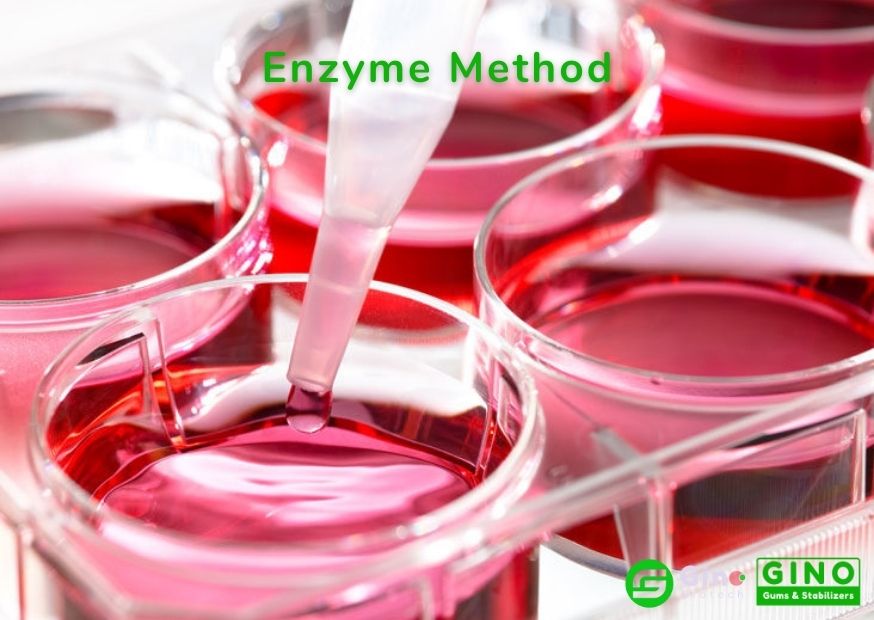
The enzyme-assisted agar extraction process is characterized by the use of cellulase (before or after alkali treatment) to act on the algae to accelerate the destruction of the cell wall of the algae, thus promoting gum leaching.
Qiu Huixia et al. investigated the process of cellulase assisted extraction of Agar from Gracilaria, adding appropriate amount of cellulase to treat Gracilaria after alkali treatment and then boiling the gel, which not only improved the yield of agar but also did not affect the gel strength of agar.
This study not only optimized the optimal extraction process of agar, but also found that the enzymatic treatment of Gracilaria was followed by bleaching with activated carbon instead of chemical reagents, which not only reduced the number of washes, shortened the production cycle, but also slowed down the environmental pollution.
In addition, the use of sulfate esterase assisted cellulase to treat Gracilaria to degrade the sulfate group on agar and reduce the amount of lye and cleaning water was considered to be of great significance in reducing production costs, energy saving and emission reduction.
Above is the introduction of the three processes of "how to make agar agar powder", please feel free to contact us if you have any questions about agar.
Related Articles
Recent Posts
About Gino Biotech

We are a biotech company specializing in the research, development, and commercialization of innovative and technological food additives hydrocolloids Agar Agar, Carrageenan, and Tailor-Made Stabilizer Solutions.
With the extended know-how and experience in the research, application, and use of Hydrocolloids, we could provide one-stop-shop customized solutions perfectly matched to the needs of our customers.
Our products cover the needs of the Meat, Dairy, Bakery, Confectionery, and other industrial sectors.



